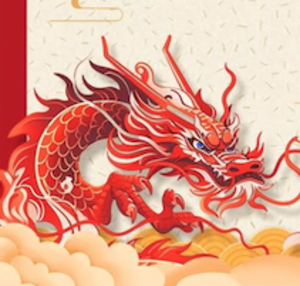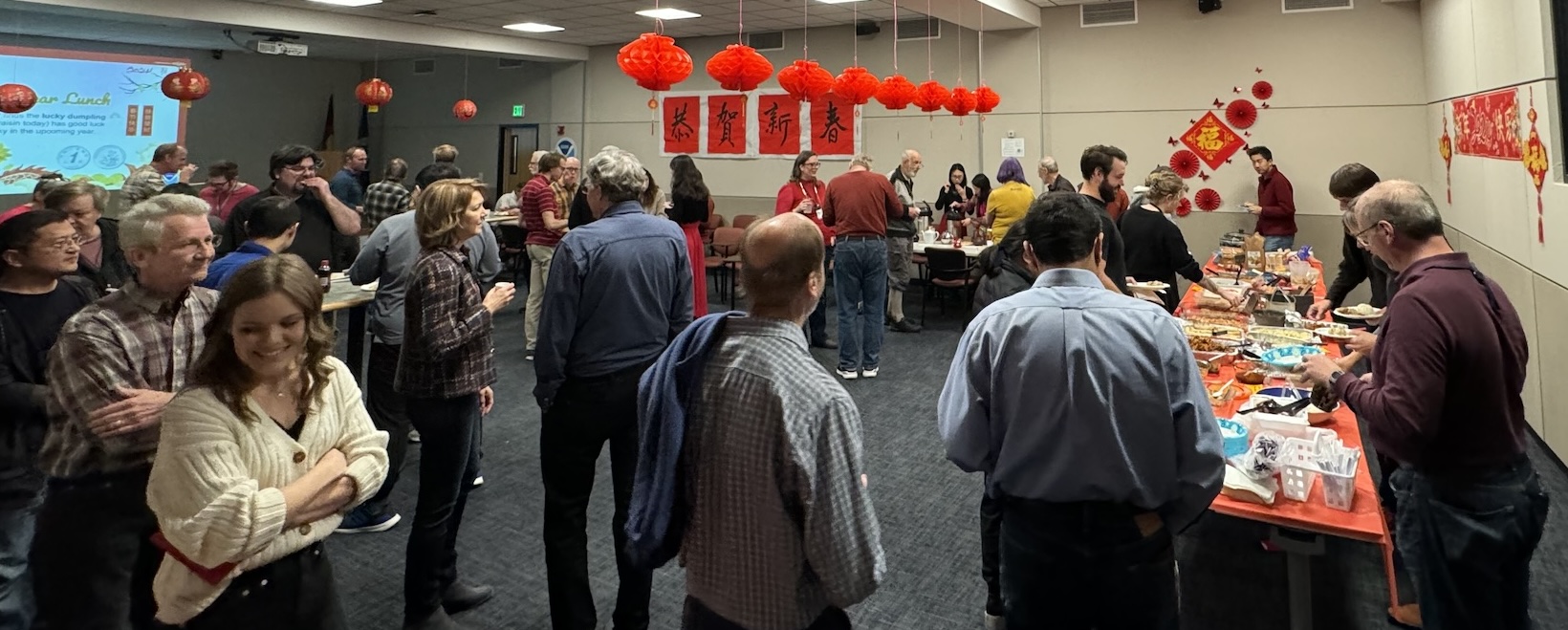The Year of the Dragon Chinese New Year celebration at GSL

GSL scientists from China organized a special Chinese Lunar New Years Eve celebration on February 9, 2024 for the Year of the Dragon.
The Dragon symbolizes power, nobleness, honor, luck, and success in traditional Chinese culture. The Dragon is a supernatural being unparalleled in talent and excellence. Preparations for Lunar New Year typically begin well in advance with thorough cleaning of homes, decorating with red and gold, and purchasing new clothes. Symbolic rituals are observed to sweep away the old and welcome in the new.
The main event of New Year's Eve is the Reunion Dinner, where families come together to share a feast. GSL staff watched videos of traditions that include fireworks and firecrackers being set off to ward off evil spirits, and lion and dragon dances. The giving and receiving of red envelopes (hongbao) containing money for good luck is another important custom. GSL staff received hongbao with a chocolate coin inside as they entered the room. GSL staff then enjoyed a potluck featuring many traditional Chinese dishes including dumplings.
 Hosts treated staff to a Chinese reading challenge. The first hand raised that could read the characters on screen correctly received a small gift.
Hosts treated staff to a Chinese reading challenge. The first hand raised that could read the characters on screen correctly received a small gift.
Common New Year Greetings:
过年好 Gwor Nee-en How - Happy New Year!
恭喜发财 Gong Shee Faa Tsai - Wish you happiness and prosperity!
万事如意 Wahn Shir Roo ee - May all go well with you.
There were five stations to learn more about Chinese traditions.
Dumpling Station
At the dumpling station, staff learned how to roll, fill, and shape dumplings. It was very challenging to make a dumpling that did not ooze the filling! Dumplings (Jiaozi) are often associated with good luck because of their shape, which is thought to resemble ancient Chinese currency called silver ingots. Making and eating dumplings during the New Year celebrations is a widespread tradition in many Chinese households. Families often gather to make dumplings together, and they are typically served as part of the festive New Year's Eve dinner. Sometimes coins are hidden inside one or more of the jiaozi, so someone may bite into something hard and discover a gold or silver coin inside their dumpling. Whoever finds the dumpling with the coin has good luck and will be lucky in the upcoming year. At GSL’s party, fruit snacks were used instead of coins for lucky dumplings.
Chopstick Challenge
In Chinese culture, chopsticks symbolize gentleness and benevolence. They represent a method allowing people to share a communal meal to promote social harmony. Chopsticks are round on the eating end which symbolizes heaven. The other end is square which symbolizes earth. This is because maintaining an adequate food supply is the greatest concern between heaven and earth. Chopsticks have been used for more than 5000 years in Chinese culture. For the chopstick challenge, staff practiced picking up chocolate chips and graduated to the most difficult - a marble.
Chinese Zodiac
Staff learned about the system that has existed in Chinese culture for more than 2000 years. They provided their birth year to find their zodiac sign and had their name written in Chinese on a bright red and gold card.
https://www.travelchinaguide.com/intro/social_cust...
The Chinese Zodiac: 鼠 Shoo Rat, 牛 Nyoh Ox , 虎 Hoo Tiger, 兔Too Rabbit, 龙 Long Dragon, 蛇 Shay Snake, 马 Ma Horse, 羊 Yahng Goat, 猴 Hoh Monkey, 鸡 Jee Rooster, 狗 Go Dog, 猪 Joo Pig
Chinese Calligraphy
In Chinese culture, calligraphy is the meditative flow of water ink on paper to create characters that dance with tradition and modernity. GSL staff explored the nuances of this captivating art form using traditional Chinese brushes and water.

Sample Chinese Tea
Tea-drinking is an important part of Chinese culture, and GSL staff were treated to seven types. China is an original producer of tea and is renowned for its skills in planting and making tea. Traditional Chinese tea comes from the Camellia sinensis tree. The development and promotion of tea has been one of China's principal contributions to the world.
GSL plans to have another Lunar New Years celebration next year!
